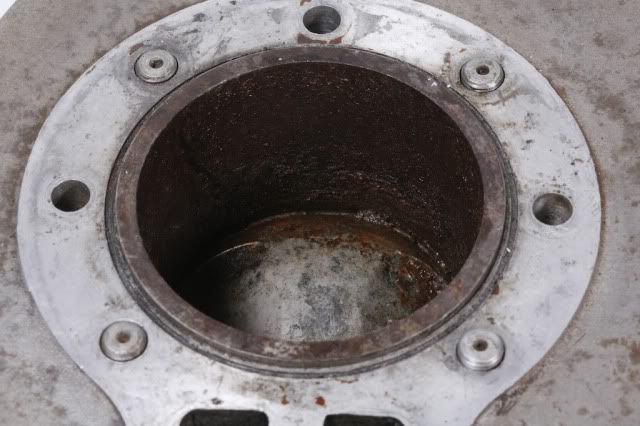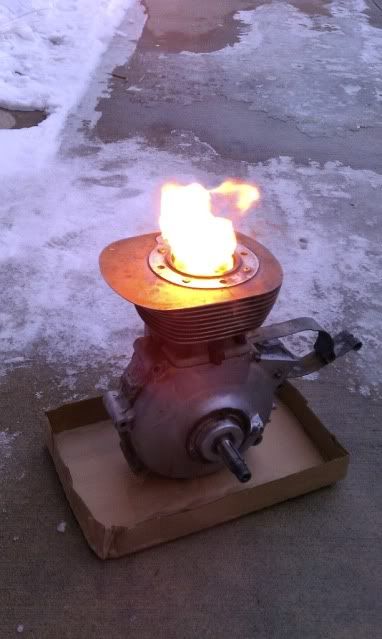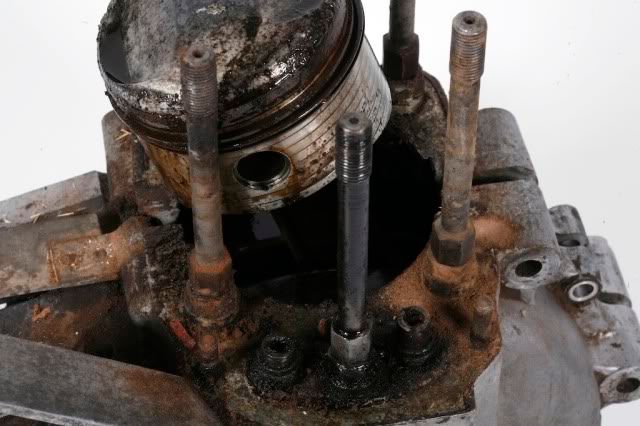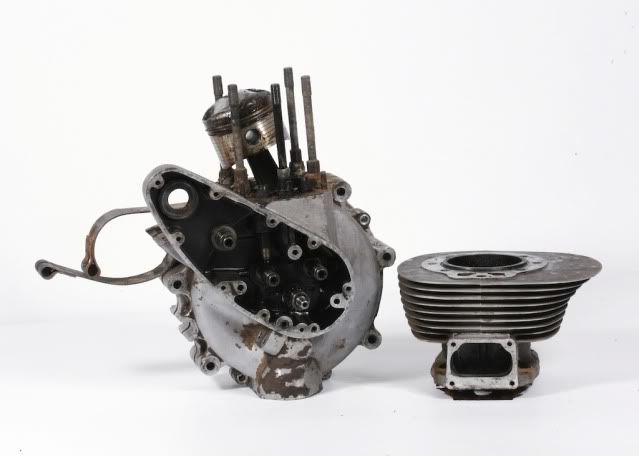A discovered a new way to remove a frozen piston from a cylinder and it works great! This bike is British, but this technique will work on old Hondas too. My BSA Gold Star has been sitting for more than 40 years and the rings and piston were severely frozen to the rusty cylinder wall.
 40 years of rust
40 years of rustI cleaned and scrapped off all the visible rust and soaked everything in different solutions of ATF and acetone, PB Blast, Seafoam Deep Creep, DOT 3 and Marvel Mystery Oil for several months with no movement whatsoever. Next, I tried Naval Jelly, a gelatinous phosphoric acid, to attack the rust on the frozen pistons. Still no movement.
It soaked everything for another week in Marvel Mystery Oil and was going to set up an electrolytic reduction to remove the rust and free the piston, but stumbled across another technique and it worked great! From an antique motor forum I found B. Kedrowski’s
12 steps to removing a frozen piston. He and another forum member have used this technique on more than 100 old and rusty tractor motors. They recommended scrapping away as much rust as possible, using a 50/50% mix of ATF and gasoline with a bit a cloth as a wick, ignite it, let it burn for an hour and then cool down. The expansion and contraction by the heating and cooling cycle allows the ATF to work its way down past the rust and lubricate the rings.
 Fire and ice
Fire and iceI then pounded the piston with a large wooden drift and a dead blow hammer and I finally had movement. Several more whacks pushed the piston down and I was able to finally release it from its rusty prison. Free at last, free at last!


I hope this technique will get some old Hondas back on the road.
Learn more about my
1962 BSA Gold Star barn find restoration.